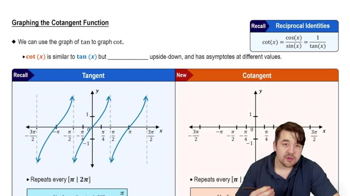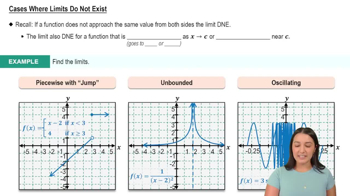Assume postage for sending a first-class letter in the United States is \$0.47 for the first ounce (up to and including 1 oz) plus \$0.21 for each additional ounce (up to and including each additional ounce).
b. Evaluate lim w→2.3 f(w).
 Verified step by step guidance
Verified step by step guidance Verified video answer for a similar problem:
Verified video answer for a similar problem:



 5:21m
5:21mMaster Finding Limits by Direct Substitution with a bite sized video explanation from Patrick
Start learning